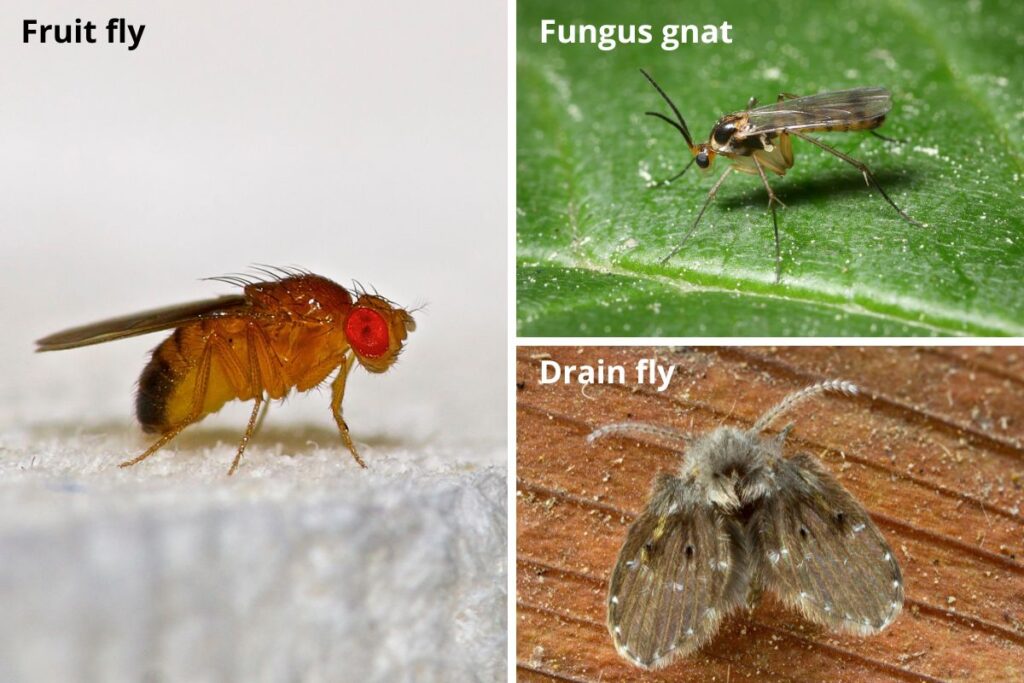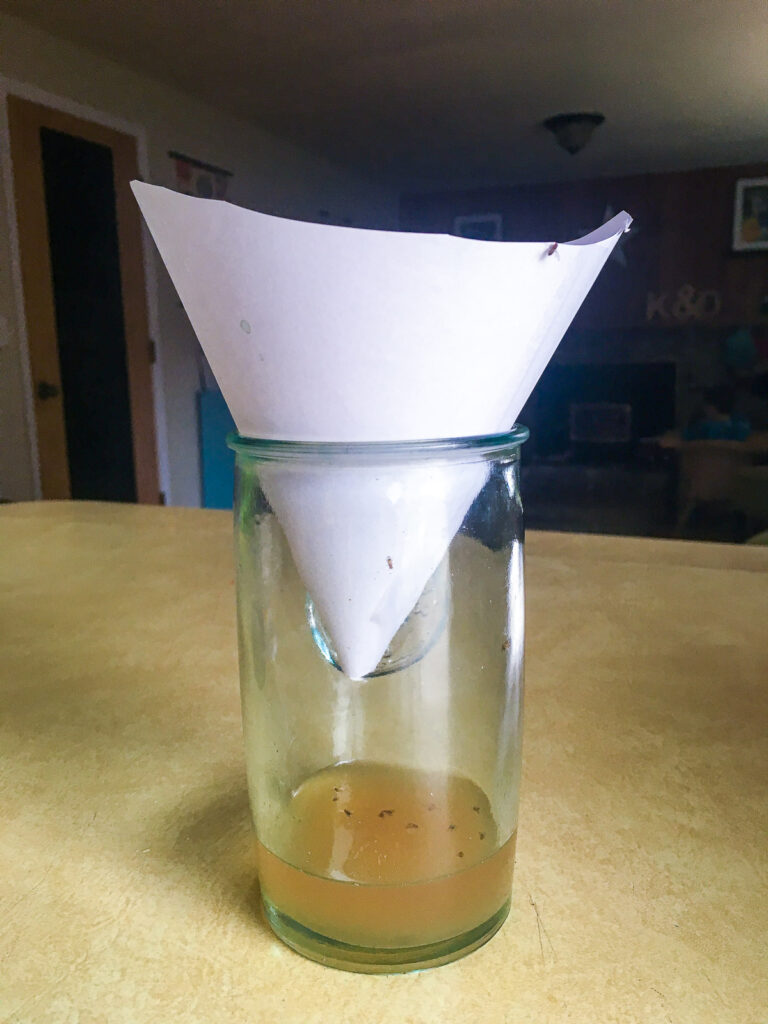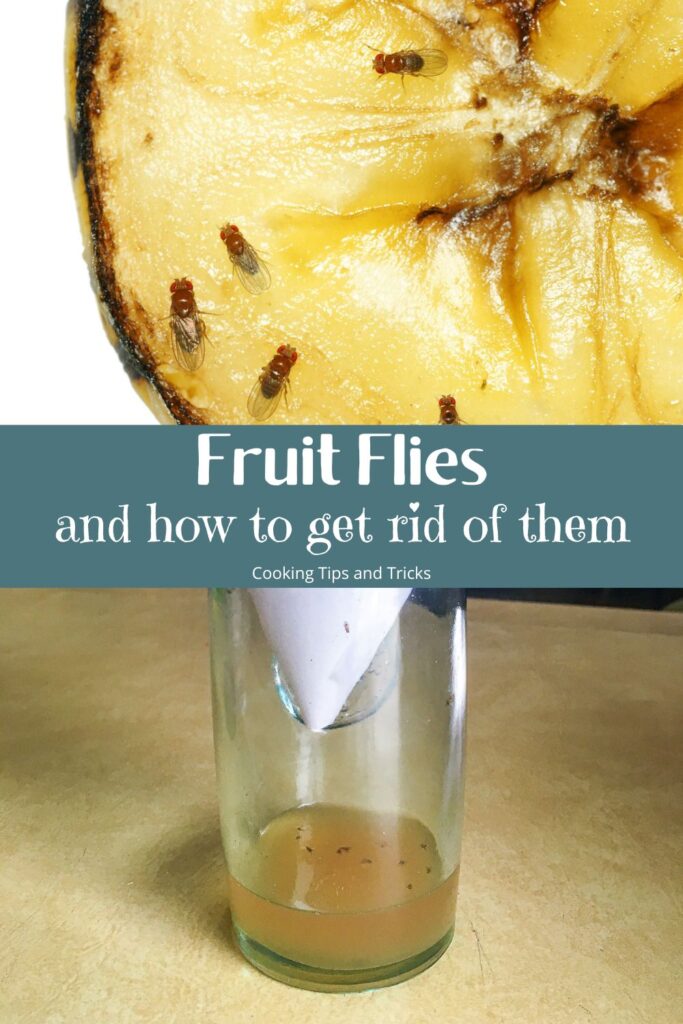Fruit Flies: What They Are and How to Eliminate Them
Summer is a warm and beautiful time of year. The season brings us many delights not readily available in the cold of winter. Happily, one of these is fresh fruit. Unfortunately, this bounty often invites thousands of uninvited guests. These interlopers are the common fruit fly and its relatives.

While these bothersome bugs cannot bite, they can spread germs and quickly take over your kitchen and most of your home. Have you ever wondered how fruit flies magically appear around your fresh produce? Let’s look at some effective ways to not only get rid of fruit flies but also how to eliminate them for good.
The fruit fly, fungus gnats, and drain flies.
Before trying to get rid of these pests, it is important to know your prey. Three common flies are mistakenly called fruit flies. Only one is TRULY a fruit fly. Here are the differences:
Fruit flies:
- Appearance: Fruit flies are typically small, about 1/8 inch in length. They have red eyes and a brownish head and body.
- Attraction: They are attracted to ripe, fermenting fruits and vegetables.
- Habitat: They are often found in kitchens, near fruit bowls, garbage bins, and compost piles.
- Lifecycle: They lay their eggs on the surface or inside decaying matter. The life cycle from egg to adult can be as short as a week.
Fungus gnats:
- Appearance: Fungus gnats are tiny, usually about 1/16 to 1/8 inch long, with long legs and a slender body. They are generally black or dark gray.
- Attraction: They are attracted to moist soil and organic matter, often found in overwatered houseplants.
- Habitat: Commonly seen around potted plants or damp areas in the house.
- Lifecycle: Their larvae thrive in moist soil, feeding on fungi, decaying plant material, and roots.
Drain flies:
- Appearance: Drain flies are small, about 1/8 inch in size, with a unique, moth-like appearance. They have a fuzzy, grayish body and wings.
- Attraction: They are attracted to the organic material and sludge found in drains.
- Habitat: They’re usually found in bathrooms and kitchens, hovering around the sink and shower drains.
- Lifecycle: Drain fly larvae live in the organic matter within drains and emerge as adults to continue the breeding cycle.

How and why do they get into your homes?
Fruit flies are very good at getting into our homes. They can sneak in through the tiniest of spaces, like window screens or almost invisible cracks, and are drawn to any kind of fruit – ripe or not. In many cases, they might even enter your home as larvae on the fruit itself. Once they find a food source, they start their life cycle. It begins by laying eggs that can hatch in just one day, leading to a quick, disgusting, and overwhelming infestation.
What to do first and always:
- Eliminate food sources: Fruit flies eat fruits, onions, potatoes, and other foods that start to decay. Keep your produce in the fridge, and promptly dispose of any overripe or decaying foods. Always use sealed bags and take them to an outside bin.
- General cleanliness: Apart from fruits, these flies are attracted to any decaying organic matter. If your kitchen is free of exposed fruits and vegetables but you still notice fruit flies, it’s time to check the trash cans, drains, and even the mop closet.
How to eliminate fruit flies with homemade traps:
- Vinegar and soap trap: Create a simple yet effective trap in a jar using apple cider vinegar mixed with a drop of dish soap. The vinegar lures the fruit flies, and the soap breaks the surface tension, ensuring the flies can’t escape and eventually drown.
- Mason jar trap: Fill a mason jar with apple cider vinegar and a drop of dish soap, cover it with plastic wrap, poke a few holes, and secure it with the jar-ring. This trap confines and drowns the fruit flies. You can also add a paper cone in the jar (see below) to make it harder for the fruit flies to escape.
- Plastic bowl trap: Small plastic bowls with apple cider vinegar and a drop of dish soap, covered with plastic wrap and secured with a rubber band, make for an effective and discreet trap. These are particularly useful for placing around the house, including near house plants where fruit flies tend to gather.

What is the right bait?
Apple cider vinegar is generally the best bait due to its sweet and fruity aroma. Other vinegar, like red wine or balsamic, can also be effective. Adding a drop of dish soap is important, as it ensures the flies sink and drown upon contact with the liquid.
Combatting fungus gnats and drain flies:
Interestingly, these homemade fruit fly traps are effective against fungus gnats and drain flies. While they don’t typically go after your fruit, they are attracted to decomposing matter (plant or otherwise). It will also be helpful to control the soil moisture of houseplants when it comes to fungus gnats. Keeping your drains clean is another way to combat drain flies. Placing these traps near houseplants and drains can help control fruit flies, fungus gnats, AND drain flies. By using the added measures of clean drains and soil moisture control, you will increase your odds of victory over these annoying creatures.
You can eliminate fruit flies and reclaim your kitchen using these simple methods. Remember, you must act quickly, maintain cleanliness, and use effective traps. Before long, you will bid a welcome goodbye to these annoying pests.
Photo credits by Deposit Photos and Canva Pro.
Edited by Oliver Baysinger.
Transitioning from the theatrical stage with her BA in theater to the culinary world, Elaine Benoit exemplifies how passion can reshape a career. As the CEO of Dishes Delish, she skillfully combines health-conscious and soul-satisfying recipes with expertly mixed cocktails. Elaine also explores the world of food through her podcast "Dishing," sharing her gastronomic journeys. Further, as a co-owner of Food Blogger Help, she dedicates herself to mentoring emerging food bloggers, offering them the tools for success. Elaine's multifaceted background, from acting to culinary arts, positions her as a guiding light in the digital food sphere.

